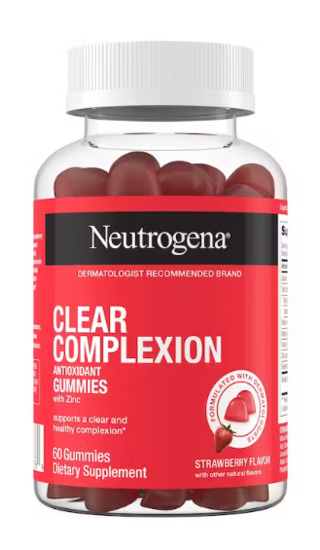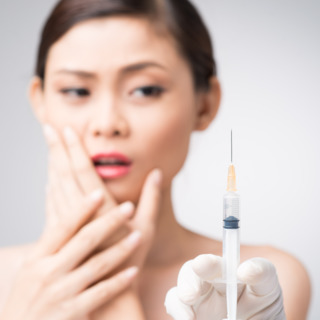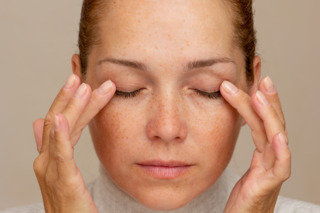
When Trendalyticsa unveiled its 2024 ingredient trends to watch, it highlighted many familiar and traditional materials, including whole-body wellness materials such as magnesium, antibacterial mugwort, anti-inflammatory castor oil and magnesium, hydrating sea buckthorn, moisturizing sodium hyaluronate, Ayurvedic turmeric, anti-aging orris root, hair health secret weapon rosemary, and retinol-like rambutan. While the list proves that what’s old is new, a wide range of new ingredients and emerging claims provide new innovation opportunities.
Decoding the Gut-beauty Axis
Spateb recently placed anti-inflammatory diets on its list of 2024 trends, highlighting that “consumers are looking to dietary avenues to help with beauty concerns.” The data backs up increasing interest in deglycyrrhizinated licorice (DGL) supplements derived from licorice root, which supports gastrointestinal health, according to an Exploding Topics analysis of online search data. Other gut health supplements are also trending; for example, searches for L-glutamine supplements have spiked by more than 700% over the 24 months ended December 2023.
The connection between diet and the skin has long been knownc, but new research points to the connections between skin and gut health for a range of issues, including acne, atopic dermatitis, eczema and psoriasis.
Bengaluru, India,-based Hairline International Hair & Skin Research & Treatment Center conducted a two-year observational study from July 2021 to June 2023 and found that, among patients seeking treatment at Hairline International during the study period, “a staggering 72% [with acne vulgaris] displayed indications of poor gut health, marked by symptoms like food intolerance, allergies, GERD and digestive problems,” according to Kala Vimal, MD, consultant dermatologist and cosmetologist at Hairline International.
The data squares with a 2021 review of the skin-gut axis published in the journal Microorganisms, which found “observations such as the prevention of AD [atopic dermatitis] through probiotics and the increased prevalence of intestinal comorbidities in chronic skin diseases suggest that skin diseases can be linked to the gastrointestinal systemd.”
Furthermore, emerging research is increasingly connecting the dots between gut health and mental healthe, as well as between mental well-being and healthy skinf.
62% of the 2,235 participating patients in the Hairline International study were female and 38% male. Each patient underwent an H. pylori test to assess their gut health. Of these patients, more than 70% suffered from atopic dermatitis, or eczema.
 Neutrogena recently dove into the skin-gut wellness space with the Clear Complexion Antioxidant Gummies with Zinc; courtesy of Neutrogena.Among other things, the researchers found that breastfeeding mothers on supplements reduced the risk of eczema in their children up to the age of two, while patients treated with oral Atogla probiotics and other treatments, including conventional medicines, experienced a 90% reduction in skin inflammation and redness among acne patients, compared to a control group that only received conventional medications and no probiotics. Furthermore, researchers reportedly uncovered an inverse relationship between probiotic use and the occurrence of skin lesions.
Neutrogena recently dove into the skin-gut wellness space with the Clear Complexion Antioxidant Gummies with Zinc; courtesy of Neutrogena.Among other things, the researchers found that breastfeeding mothers on supplements reduced the risk of eczema in their children up to the age of two, while patients treated with oral Atogla probiotics and other treatments, including conventional medicines, experienced a 90% reduction in skin inflammation and redness among acne patients, compared to a control group that only received conventional medications and no probiotics. Furthermore, researchers reportedly uncovered an inverse relationship between probiotic use and the occurrence of skin lesions.
These takeaways are far from speculative. No less than Neutrogena recently dove into the skin-gut wellness space with the Clear Complexion Antioxidant Gummies with Zinc. The supplements are designed support a healthy gut and feature vitamins A, C, and E to counteract free radicals and support even skin tone, as well as zinc to support healthy skin function, per the brand. Designed for consumers aged 14 and up, the strawberry-flavored gummies notably feature a daily probiotic—80 mcg Bacillus coagulans SNZ1969 10 mg (1 billion CFU)—to support the body’s good gut bacteria. A daily dose is considered two gummies, per Neutrogena.
The launch and the intersecting market data point to an opportunity for brands to educate consumers on gut-skin health interactions and to innovate toward those issues—inside and out.
Argireline’s Botox Boom
 When Exploding Topics recently detected immense engagement with Botox serums on TikTok, it noted that a key recurring anti-wrinkle ingredient, Argireline, which offers a needle-free alternative to more invasive treatments; imagecourtesy of DragonImages at Adobe Stock.When Exploding Topics recently detected immense engagement with Botox serums on TikTok, it noted that a key recurring anti-wrinkle ingredient, Argireline. Often associated with The Ordinary’s topical Argireline Solution 10% SKU, Argireline is Lipotec/Lubrizol’s trademark for the synthetic peptide acetyl hexapeptide-3. Common product formats associated with the ingredient include oils, serums and solutions that target wrinkles on the forehead and around the eyes.
When Exploding Topics recently detected immense engagement with Botox serums on TikTok, it noted that a key recurring anti-wrinkle ingredient, Argireline, which offers a needle-free alternative to more invasive treatments; imagecourtesy of DragonImages at Adobe Stock.When Exploding Topics recently detected immense engagement with Botox serums on TikTok, it noted that a key recurring anti-wrinkle ingredient, Argireline. Often associated with The Ordinary’s topical Argireline Solution 10% SKU, Argireline is Lipotec/Lubrizol’s trademark for the synthetic peptide acetyl hexapeptide-3. Common product formats associated with the ingredient include oils, serums and solutions that target wrinkles on the forehead and around the eyes.
In 2020, Lipotec introduced an updated version of the technology, Argireline Amplified, which was reportedly produced according to the principles of green chemistry and which featured improved efficacy results in attenuating expression wrinkles compared to its precursor.
Then, in 2023, Lubrizol’s oil-soluble Argireline YOUth peptide was launched to address the prejuvenation anti-aging concerns of younger consumers by slowing the onset of the signs of aging in a way that mimics botulinum toxin. Argireline YOUth peptide benefits from the LipoClear inverse micelle delivery system, which allows for the creation of an oil soluble active ingredient. As a result, the new peptide can reportedly be expanded to new applications, including oil-based skin care, especially transparent serums, oils and sticks. This is in line with search patterns surfaced by Exploding Topics’ data.
Energizing the Skin
 Inspired by the traditional Chinese medicine Qi concept of the circulation of the skin's vital energy, Luceane mimics the effects of oxygen therapy practices. to stimulate and protecting skin cell respiration and energy production.Cottonbro at PexelsSederma's new Luceane active ingredient is designed to boost cell respiration and to combat hypoxiaging, thereby reducing skin fatigue and improving radiance.
Inspired by the traditional Chinese medicine Qi concept of the circulation of the skin's vital energy, Luceane mimics the effects of oxygen therapy practices. to stimulate and protecting skin cell respiration and energy production.Cottonbro at PexelsSederma's new Luceane active ingredient is designed to boost cell respiration and to combat hypoxiaging, thereby reducing skin fatigue and improving radiance.
Inspired by the traditional Chinese medicine Qi concept of the circulation of the skin's vital energy, Luceane mimics the effects of oxygen therapy practices to stimulate and protect skin cell respiration and energy production.
Simultaneously, the active induces micropollutant removal within the cells, invigorates cellular metabolisms and reinforces the skin’s holobiont for holistic balance.
In effect, the technology slows the perceived aging process by five years after just one month of application, resulting in a reduction of skin fatigue signs and skin radiance improvement.
Luceane is a bioactive saccharide extract obtained by biofermentation of a Pseudoalteromonas strain isolated from a Bahamian candelabra-type octocoral. The material is biodegradable, with full degradation after 28 days.
Collagen Boosters
 Titled "Skin care formulation with lipophilic peptides," Deciem's recent patent concerns a skin care composition ideally featuring palmitoyl-GHK-Cu (GHK-Cu being a copper peptide) at levels of 0.2-1.1%.Ilse at Adobe Stock
Titled "Skin care formulation with lipophilic peptides," Deciem's recent patent concerns a skin care composition ideally featuring palmitoyl-GHK-Cu (GHK-Cu being a copper peptide) at levels of 0.2-1.1%.Ilse at Adobe Stock
A New Patent for Copper Peptides
In July 2023, Spate reported that copper peptides were among the skin care ingredients experiencing the largest monthly gains in search volume. Among the products on the market featuring the increasingly popular technology is The Ordinary’s "Buffet" + Copper Peptides 1%. No wonder, then, that copper peptides are at the center of The Ordinary's parent company's first patent.
Titled “Skin care formulation with lipophilic peptides,” Deciem's patent concerns a skin care composition ideally featuring palmitoyl-GHK-Cu (GHK-Cu being a copper peptide) at levels of 0.2-1.1%.
GHK-Cu is generally associated with collagen synthesis stimulation, enhanced wound healing/tissue regeneration, anti-aging and anti-inflammatory effects, and more.
In the present patent, the formulation featuring palmitoyl-GHK-Cu would render the composition “substantially free of alcohols or preservatives,” ideal for consumers seeking minimalistic and free-from products. (That said, Deciem is historically science-forward, often eschewing the free-from focus of conventional "clean" beauty brands.)
Furthermore, the formulation concept would allow for “a high concentration of the peptide in the final composition,” maximizing anti-aging and other related benefits.
Plant-based Collagen Fragments
LipoTrue’s Col-Frag Remastered is a biomimetic to a fragment of the human type I collagen sequence. The technology is derived from plants grown in vertical farms, thereby boosting its sustainability, and acts as a building block and booster for collagen synthesis. Col-Frag Remastered also tightens the dermis and epidermis, resulting a facelift effect, and brightens the skin while preventing senescence. The ingredient can be used synergistically with ascorbyl glucoside, per the company, and has greater efficacy compared to that conventional material when it comes to minimizing the appearance of wrinkles. Col-Frag Remastered can also be applied in hair care as a natural polymer that delivers moisture, gloss and smoothness to damaged hair upon one application.
AI-driven Peptide Discovery
Ireland-based Nuritas leverages an AI discovery platform to surface valuable peptides. PeptiYouth, an anti-aging cell-signaling peptide for skin care, makeup and body care is designed to improve the appearance of deep wrinkles, dull skin, skin pores, dark spots and uneven skin tone while also boosting the efficacy of vitamin C when formulated together. Among key claims, the collagen-boosting technology reportedly results in a 41% reduction in the appearance of wrinkles, 26% reduction in appearance of fine lines and 20% reduction in dark spots, as well as a 20% visible reduction in pore size and 13% boost in the appearance of smoother skin. These results were reported among a 40 person double blind placebo trial over a 28-day period.
Longevity & the Skin’s ‘Healthspan’
 By targeting sirtuins to boost skin longevity, brands can tap into age reversal claims; image courtesy of Tatiana Foxy at Adobe Stock.Estée Lauder’s new Skin Longevity platform coincides with the formation of a cross-disciplinary group of longevity experts who will “educate and empower consumers to rethink how they approach skin care and lifestyle” to shift from an anti-aging mindset to an age reversal focus.
By targeting sirtuins to boost skin longevity, brands can tap into age reversal claims; image courtesy of Tatiana Foxy at Adobe Stock.Estée Lauder’s new Skin Longevity platform coincides with the formation of a cross-disciplinary group of longevity experts who will “educate and empower consumers to rethink how they approach skin care and lifestyle” to shift from an anti-aging mindset to an age reversal focus.
The brand’s Sirtivity-LP ingredient technology is at the core of the brand’s age reversal activities. The technology targets sirtuins in skin, which are a family of seven “NAD+ dependent proteins” central to cellular functions impacting the skin, including “aging, UV damage response, oxidative stress, and wound repairg.”
Sirtivity-LP is being applied as the hero ingredient in Estée Lauder’s new Re-Nutriv Ultimate Diamond Transformative Brilliance Soft Crème, set for launch this month, January 2024, and which reportedly “reveals visible age reversal starting in just 14 days.”
Back in 2019, Estée Lauder researchers revealed that increasing evidence has demonstrated the importance of sirtuins in longevity, metabolism and control of stress. As mentioned, they function primarily as NAD-dependent deacetylases, although two of the seven have ribosyl transferase activity. The collapse of local chromatin results in the modulation of transcriptional programs involved in metabolism and inflammation.
However, work presented in 2019 showed it was possible to combine ingredients such as flower and algae extracts with a ferment to activate sirt-1, -3 and -6, respectively (of the total seven). This led to increased activity in 62-year-old skin fibroblasts. Specifically, skin cells could sense and integrate signals given by a eucalyptus extract to combat environmental insults such as increased oxidative stress and inflammation, and decreased barrier function.
Sirtuin- and NAD-focused topical and ingestible products have been a key focus of recent innovationh, but activity has ramped up significantly in the last year.
For instance, Mibelle Biochemistry’s new RejuveNAD technology naturally stimulates the endogenous regeneration of NAD+ by activating the enzyme NAMPT, thereby making the skin appear as much as eight years younger.
As detailed in the journal Nature, “NAD+ can directly and indirectly influence many key cellular functions, including metabolic pathways, DNA repair, chromatin remodeling, cellular senescence and immune cell function. These cellular processes and functions are critical for maintaining tissue and metabolic homeostasis and for healthy aging.”
By boosting the “longevity molecule,” NAD+, RejuveNAD is able to optimize cellular processes to simultaneously address "at least" five of the 12 hallmarks of aging, including mitochondrial dysfunction, cellular senescence, loss of proteostasis, epigenetic alteration and genomic instability.
By energizing mitochondria and promoting DNA repair, RejuveNAD is able to make the skin appear eight years younger within 42 days, per clinical studies cited by Mibelle Biochemistry.
Elsewhere, Circe Scientific’s Pteroyouth (INCI: resveratrol dimethyl ether (and) picolinic acid) reportedly enhances the activity of sirtuins to regulate cellular activities related to cell vitality and aging.
More innovations in this space are likely to emerge in the new year.
“The Estée Lauder brand has always been at the forefront of breakthrough skin science,” said Justin Boxford, global brand president, Estée Lauder. “Longevity is one of the fastest growing movements in the beauty and wellness industries, with multi-generational consumer interest in biohacking and age-reversal practices at an all-time high. Estée Lauder has been pioneering skin longevity research for more than 15 years, and we already have the proven technology to reveal visible age reversal. We see this as a truly pivotal moment for the brand to disrupt the industry, changing what we know about skin aging and reimagining skin care for the future.”
Boxford added, “We are thrilled to be collaborating with the Stanford Center on Longevity, a leading authority advancing longevity research. Through the support of their new Program of Aesthetics & Culture, our goal is to build the data-driven foundation from which to shape the future of aesthetics and extend skin healthspan.”
What Consumers Mean by ‘Clean, Sustainable Beauty’
 Recently, NielsenIQ reported that 62% of surveyed consumers believe “sustainability is more important to them than it was two years ago”; image courtesy of AnnaStills at Adobe Stock.Terms like “clean” and “sustainable” are immensely amorphous and prone to confusion. It can also welcome unwanted scrutiny. Recently, the U.K’s Competition and Markets Authority investigated several claims associated with Unilever products, including claims about ingredients allegedly “presented in a way that may exaggerate how ‘natural’ the product is.” Whether this investigation goes anywhere, it’s clear that brand claims are increasingly under the microscope. Aligning brand and consumer ideas around key claims could provide marketers and R&D with breathing room.
Recently, NielsenIQ reported that 62% of surveyed consumers believe “sustainability is more important to them than it was two years ago”; image courtesy of AnnaStills at Adobe Stock.Terms like “clean” and “sustainable” are immensely amorphous and prone to confusion. It can also welcome unwanted scrutiny. Recently, the U.K’s Competition and Markets Authority investigated several claims associated with Unilever products, including claims about ingredients allegedly “presented in a way that may exaggerate how ‘natural’ the product is.” Whether this investigation goes anywhere, it’s clear that brand claims are increasingly under the microscope. Aligning brand and consumer ideas around key claims could provide marketers and R&D with breathing room.
Recently, NielsenIQ reportedi that 62% of surveyed consumers believe “sustainability is more important to them than it was two years ago.” Yet that importance is shifting beyond free-from declarations to more specific claims. For instance, interest in cruelty-free products is up 18.1%, while interest in compostable and plastic-free products is up 30.9% and 12.2%, respectively.
The report warns that, at times, brands will need to find ways to reconcile clean and sustainable demands. For instance, the firm noted, “Many consumers favor natural alternatives to synthetic ingredients, but harvesting natural ingredients at scale could have a negative impact on the environment. As consumers prioritize sustainability, transparent ingredient sourcing and environmental impact assessments will be critical.”
Licorice-based Hyperpigmentation Solution
Roelmi HPC has expanded its SelectSieve line with SelectSieve Glitter (INCI: Not Provided), a botanical complex clinically proven to reduce skin dark spots in terms of size and color intensity, offering a more youthful appearance, per the company.
Composed of Olea europaea L. var. coratina and licorice root (Glycyrrhiza glabra L.), the ingredient is the result of ethical and responsible approaches, per the company.
The clinical study, performed on 60 volunteers aged 25-65 years, confirmed that the ingredient is useful in the treatment of skin hyperpigmentation. Through the inhibitory action of tyrosinase activity, it contributes in reducing melanogenesis and giving support to the response to oxidative stress of the skin.
Biotic Beauty’s Next Phase
With dysbiosis a key target for aging and a range of other skin issues, several suppliers and brands are advancing technologies that deliver biomic harmony.
Living Beauty
 “The integration of Lactobio into our Advanced Research is highly complementary: L’Oréal’s strong scientific knowledge and technological advancements coupled with Lactobio’s best-in-class formulations using living organisms will significantly strengthen and accelerate our microbiome research dedicated to beauty,” said Anne Colonna, global head of advanced research of L’Oréal Groupe. “In joining forces, we aim to develop a new generation of cosmetics that will use cutting-edge innovations in the formulation process to provide science-based, precision probiotic and postbiotic products with new performance levels.”Jacob Lund at Adobe StockL’Oréal has acquired Lactobio, a Copenhagen-based probiotic and microbiome research company, boosting its beauty ingredient platform with live bacteria technologies.
“The integration of Lactobio into our Advanced Research is highly complementary: L’Oréal’s strong scientific knowledge and technological advancements coupled with Lactobio’s best-in-class formulations using living organisms will significantly strengthen and accelerate our microbiome research dedicated to beauty,” said Anne Colonna, global head of advanced research of L’Oréal Groupe. “In joining forces, we aim to develop a new generation of cosmetics that will use cutting-edge innovations in the formulation process to provide science-based, precision probiotic and postbiotic products with new performance levels.”Jacob Lund at Adobe StockL’Oréal has acquired Lactobio, a Copenhagen-based probiotic and microbiome research company, boosting its beauty ingredient platform with live bacteria technologies.
Lactobio, founded in 2017, is home to a microbiome discovery platform and screening method that aids researchers in identifying the most effective and safe Lactobacillus strains for topical skin and hair applications, per L'Oreal.
“The integration of Lactobio into our Advanced Research is highly complementary: L’Oréal’s strong scientific knowledge and technological advancements coupled with Lactobio’s best-in-class formulations using living organisms will significantly strengthen and accelerate our microbiome research dedicated to beauty,” said Anne Colonna, global head of advanced research of L’Oréal Groupe. “In joining forces, we aim to develop a new generation of cosmetics that will use cutting-edge innovations in the formulation process to provide science-based, precision probiotic and postbiotic products with new performance levels.”
“Denmark has a long history of innovation based on living microorganisms applied to food, agriculture and health, and it was against this background that we were inspired to create Lactobio,” said Søren Kjærulff, Ph.D., founder and chief scientific officer of Lactobio. “I am incredibly proud of what our team has achieved and excited for what the future holds as part of L’Oréal Groupe, where together, we can apply microbiome research to new fields of beauty innovation for people all over the world.”
Corn-based Postbiotic
BioAktive has announced Lactomaizol, a corn-based multigrain postbiotic active designed for gentle skin cleansing and sebum regulation. The ingredient expands the company’s postbiotic actives developed through fermentation technology. Features of the ingredient include: natural cleansing, soothing and skin barrier protection, gentle absorption of excess keratin and sebum, significant reduction in the production of excess sebum, and skin smoothing with notable pore shrinkage.
Marine-based Beauty
Red Algae Hair Density Booster
 An increasing number of hair and skin care ingredient innovation is being derived from the world's oceans.astrosystem by Adobe StockProvital’s Densinaria (INCI: water (and) glycerin (and) Palmaria palmata extract (and) arginine) is a hair volume and strengthening active ingredient derived from a red algae known as dulce (Palmaria palmata) and paired with arginine to boost hair volume and strength and prevent split ends.
An increasing number of hair and skin care ingredient innovation is being derived from the world's oceans.astrosystem by Adobe StockProvital’s Densinaria (INCI: water (and) glycerin (and) Palmaria palmata extract (and) arginine) is a hair volume and strengthening active ingredient derived from a red algae known as dulce (Palmaria palmata) and paired with arginine to boost hair volume and strength and prevent split ends.
The technology’s reconstructive biomolecules act on the hair cuticle to strengthen the hair, while Palmaria palmata's film-forming effects address split ends.
Furthermore, the inclusion of arginine aids in the boosting of hair fiber resistance from the inside out, reportedly increasing fiber diameter by 25%, an impact similar to keratin, per Provital.
The fiber strengthening specifically addresses impacts of stress factors and hormonal shifts, according to the supplier.
Densinaria is of 100% natural origin and is COSMOS-approved.
Hydrating Marine Polysaccharide
Sacramento-based Macro Oceans has unveiled a new Hydrating Marine Polysaccharide, derived from Alaska seaweed (Saccharina latissima), which reportedly provides clinically proven hydration for skin and hair care products, per third-party trials.
The biotechnology startup produces the cosmetic bioactive compound by using green chemistry to gently isolate the complex, naturally hydrating polysaccharides found in the source seaweed.
The waste product from this process is then used to produce food and plant-based bioplastic packaging, according to Macro Oceans. Furthermore, farmed seaweed is reportedly a regenerative, carbon-negative crop, ensuring a low carbon footprint for the final cosmetic material.
Macro Oceans' investors include Refactor Capital, Lowercarbon Capital and McKinley Capital.
Supporting High-SPF Claims
Croda recently launched several sunscreen ingredients offering high SPF and effective UVA protection. Based on Solaveil Clarus technology, which reportedly delivers a tightly controlled particle size distribution, Solaveil CT-60W (INCI: water (aqua) (and) titanium dioxide (and) stearic acid (and) alumina (and) polyglyceryl-4 laurate/sebacate (and) polyglyceryl-4 caprylate/caprate (and) sucrose stearate (and) sorbitan trioleate (and) sorbitan caprylate (and) benzyl alcohol (and) isostearyl isostearate) is a titanium dioxide (TiO2) water-based dispersion that allows for high SPF claims with clarity on the skin. This formulating process removes the undesirable whitening effect typically associated with TiO2, per Croda, while the SPF efficacy remains uncompromised.
Meanwhile, Croda’s Solaveil CT-300 (INCI: caprylic/capric triglyceride (and) titanium dioxide (and) polyhydroxystearic acid (and) aluminum stearate (and) alumina) is a dispersion of hydrophobic titanium dioxide in a naturally derived carrier oil that provides high SPF efficacy with true transparency on the skin.
Retinoid and Bakuchiol Alternative for Sensitive Skin
New test results reportedly show that Lubrizol’s Stevisse imparts retinoid- and bakuchiol-like benefits without skin irritation.
In vitro tests showed that the ingredient technology can engender an antioxidant response that is greater than stevia extracts obtained through conventional extraction technologies.
Stevisse is produced using Phenobio, a subcritical water technology. As previously reported, the extraction technology is an alternative to conventional solvents and extracts a broader range of phytoactives by using only water as the extraction solvent.
This is all reportedly completed with a short extraction time with no thermal degradation to provide pure, sustainable and eco-conscious extracts.
Materials produced via the Phenobio system can be certified Ecocert-compliant and meet COSMOS environmental standards.
According to Lubrizol, the latest testing showed that Stevisse can minimize skin inflammation by 57.8% compared to retinoic acid, in a similar way to bakuchiol.
Furthermore, the ingredient reportedly improved the skin tone homogeneity and minimized dark spots after 28 days of treatment.
Lubrizol previously reported anti-wrinkle results for the technology (reduced wrinkle area by up to 87.3% and length by up to 85.3%).
The supplier is using blockchain technology to track Stevisse's production from the cultivation of the raw material (stevia leaves) to the final product delivered to the customer. This reportedly prevents modifications and ensures a fully transparent traceability process from field to bottle.
2024 Beauty Ingredient Preview
The December 2023 annual meeting of the Society of Cosmetic Chemists in New York provided a platform for suppliers to review existing ingredients and preview ingredient technology and research set for launch in the year to come. Here, we round up several materials teased at the event.
Tripeptide for Sebum and Pore Size Control
Lilian Mussi of Chemyunion, Inc. spoke about the synthetic tripeptide-85 (L-glutamyl-L-valyl -L-phenylalanine) and its unique melanocortin receptor-5 (MC5R) mechanism to control sebum at any life stage—as well as manage pore size—with immediate and lasting effects. The impact of the ingredient on lipogenesis gene expression biomarkers revealed: a 15% reduction of PLIN2, which stimulates the differentiation of sebocytes and favors the accumulation of lipids in cells; a 20% reduction of c-MYC, which regulates the size and differentiation of sebocytes; and; a 13% decrease in SCD-1, which stimulates the synthesis of unsaturated fatty acids and the development of sebocytes. Mussi concluded that tripeptide-85 could balance and mattify oily skin, reduce sebum production by 30% after 14 days, act on young and mature skin, and visibly minimize pore size.
Vegan, Upcycled Hair Repair Protein
 BASF's Kerasylium is derived from upcycled Silybum marianum seedcake extract (SMSE), is said to contain similar amino acids to keratin. Using an optimized extraction process, the company isolated a micro-complex of nutrients and peptides from this source, which were explored to improve hair condition.Anthony at Adobe StockAllison Garlet, of BASF France, highlighted a new vegan, keratin-like filler to protect hair. The ingredient, Kerasylium (INCI: maltodextrin (and) Silybum marianum seed extract), derived from upcycled Silybum marianum seedcake extract (SMSE), is said to contain similar amino acids to keratin. Using an optimized extraction process, the company isolated a micro-complex of nutrients and peptides from this source, which were explored to improve hair condition.
BASF's Kerasylium is derived from upcycled Silybum marianum seedcake extract (SMSE), is said to contain similar amino acids to keratin. Using an optimized extraction process, the company isolated a micro-complex of nutrients and peptides from this source, which were explored to improve hair condition.Anthony at Adobe StockAllison Garlet, of BASF France, highlighted a new vegan, keratin-like filler to protect hair. The ingredient, Kerasylium (INCI: maltodextrin (and) Silybum marianum seed extract), derived from upcycled Silybum marianum seedcake extract (SMSE), is said to contain similar amino acids to keratin. Using an optimized extraction process, the company isolated a micro-complex of nutrients and peptides from this source, which were explored to improve hair condition.
Damaged hair treated with the extract was shown via FTIR to resemble the vibrational signature of untreated virgin hair. According to Garlet, the product penetrated hair, including the cortex and damaged cuticle, stabilizing the hair structure via molecular bonding and imparting breakage protection against, for example, oxidative stress from urban particulate matter; testing showed hair integrity was preserved by 59%. The ingredient also provided a metal protection index of 63%. Finally, a clinical study of 31 women with self-perceived hair damage used an SMSE shampoo and conditioner and reported less splitting, less chemical stress and improved vitality, volume and shine versus the placebo treatment.
Recombinant Type XVII Collagen in Hair Care
Shuxian Hu of Trautec described the production of a 100% pure recombinant collagen having the same sequence as natural human collagen for high bioactivity and tolerability. The ingredient reportedly showed no cytotoxicity, improved cell migration better than human collagen and promoted basal membrane activity, assisting with dermal-epidermal junction repair. A clinical study of a serum containing the ingredient found that after two weeks of microneedle applications, subjects saw reduced hair loss and improved hair density and diameter; microneedle injections of the ingredient after three months provided significant improvements, per Hu.
Hair Conditioning Dynamics
Marni Dexter of Croda then showed how to evaluate the effects of ingredient compositions on the structure, stability and hair protection efficacy of conditioners. She described surface friction evaluations using behentrimonium methosulfate, as well as tests of varying ratios of fatty alcohols to behenamidopropyl dimethylamine (BAPDMA) (e.g., citric acid, lactic acid and gluconic acid), which provided a range of textures, consistencies and stabilities.
Dexter concluded that formulations with BAPDMA showing lower shear viscosity and low yield stress gave improved conditioning performance with respect to wet combing and surface friction—independent of the ingredients selected. In addition, the approach to achieving lower viscosity was dependent on the conditioning ingredient and the acid used. Whereas BTMS and BTAC required high quat to fatty acid ratios or low concentrations of BTMS, BAPDMA requires an optimized ratio with a high concentration of BAPDMA.
Combating HA Degradation
Ichimaru Pharcos’ HyaluGuard (INCI: water (aqua) (and) butylene glycol (and) Artemisia capillaris flower extract) anti-aging active reportedly works by inhibiting the HYBID enzyme that degrades hyaluronic acid (HA) in skin. According to the company, protecting HA from breaking down increases the moisture content in skin and reduces wrinkles and skin sagging. The ingredient technology is COSMOS-approved and recommended for facial care, body care, lip care and makeup applications.
Sustainable Functional Advancements
Eco-friendly Solubilizer
Seppic’s Sepiclear G7 (INCI: heptyl glucoside) is a multifunctional eco-friendly solubilizer. The ingredient’s preservative boosting properties stem from its hydrotrope properties, which increase its preservative solubility in formulations and decreases its water activity, thereby boosting the performance of the preservatives, per the company. Sepiclear G7 is a natural, readily biodegradable, non-ethoxylated and preservative-free low-viscosity liquid, per the company, and is easy to handle and cold processable. These properties render it as an effective solubilizer for fragrances and essential oils with non-foaming properties. The ingredient has makeup removal ability as well and allows formulators to obtain thinner cream-gels without having an impact on the viscosity, per the company.
Plant-based Emollients
 Sonneborn, LLC’s SonneNatural NXG is a plant-based emollient for use in personal care products. The ingredient reportedly enhances the formulation of lip care and personal care products due to its firmness and sensory properties.Friends Stock at Adobe StockSonneborn, LLC’s SonneNatural NXG is a plant-based emollient for use in personal care products. The ingredient reportedly enhances the formulation of lip care and personal care products due to its firmness and sensory properties. The technology’s naturally derived firm texture reduces the amount of thickener or wax required in the end formulation for anhydrous formulas.
Sonneborn, LLC’s SonneNatural NXG is a plant-based emollient for use in personal care products. The ingredient reportedly enhances the formulation of lip care and personal care products due to its firmness and sensory properties.Friends Stock at Adobe StockSonneborn, LLC’s SonneNatural NXG is a plant-based emollient for use in personal care products. The ingredient reportedly enhances the formulation of lip care and personal care products due to its firmness and sensory properties. The technology’s naturally derived firm texture reduces the amount of thickener or wax required in the end formulation for anhydrous formulas.
The ingredient also offers non-greasy application, excellent moisture retention and an occlusive after feel that leaves skin feeling soft and luxurious, per the company.
Designed to promote sustained moisturization, SonneNatural NXG has been developed for lip balms, lipsticks, body lotions and facial scrubs.
Versatile Emulsifier
BASF’s Emulgade Verde 10 MS taps polyglyceryl fatty acid ester technology to provide versatile O/W emulsification that offers sustainability benefits. The technology is readily biodegradable, based on 100% renewable feedstocks and is COSMOS approved. The emulsifier provides good stability in O/W creams and lotions and compatibility with commonly used cosmetic ingredients, per the company, including both synthetic and biopolymers. It also reportedly provides shear thinning behavior and supports easy distribution on the skin.
Versatile Naturally Derived Emulsifier
Seppic’s Fluidfeel Easy (INCI: lauryl glucoside (and) myristyl glucoside (and) polyglyceryl-6 laurate) is a naturally derived emulsifier with a soft and light feel. The ingredient supports multiple applications, including skin care, sun care, makeup, hair care, hygiene and fragrance. Originally developed for sprayable fluid to very-fluid textures, Seppic has extended the material’s application to thicker formulations to create a wider range of emulsions while retaining its cold process and sensory properties.
Plant-derived Ester
Nippon Fine Chemicals’ Plandool PM (INCI: phytosteryl macadamiate) acts as a humectant and conditioning agent in formulations. It is a non-GMO, plant-derived sterol-type ester that, according to the company, ameliorates rough skin and imparts anti-inflammatory properties. Additional benefits include moisturization, high refractive index and gloss with high water-holding capacity, formation of intercellular lamellar structure-like liquid crystals; high spreadability and touch, and reduction of TEWL and improvement of skin barrier function.
Footnotes
awww.trendalytics.co/
bwww.spate.nyc/reports
cwww.cosmeticsandtoiletries.com/research/literature-data/news/21846647/diets-high-in-sugar-and-fat-may-contribute-to-skin-inflammation
dwww.ncbi.nlm.nih.gov/pmc/articles/PMC7916842/
ewww.gcimagazine.com/companies/news/22005633/unilever-unilever-x-holobiome-partnership-explores-gut-microbiome
fwww.gcimagazine.com/consumers-markets/news/22876115/skin-health-is-a-mental-wellness-issue-new-study
gwww.ncbi.nlm.nih.gov/pmc/articles/PMC5568696/
ihttps://nielseniq.com/global/en/insights/analysis/2023/trends-in-sustainable-beauty-2023/









